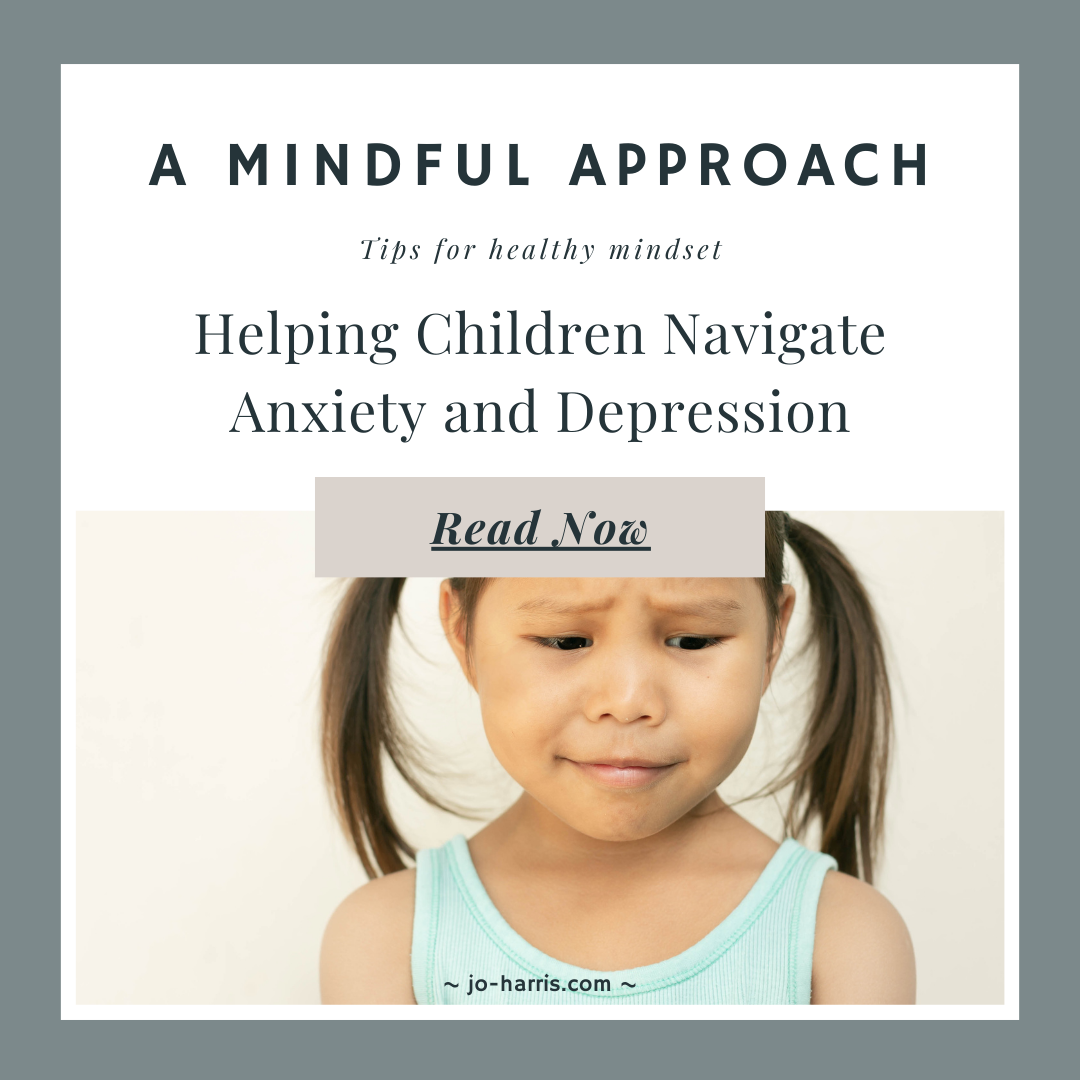In today’s fast-paced world, children are not immune to the challenges of anxiety and depression. As a mind coach and certified hypnotherapist, I understand the importance of addressing these issues with a compassionate and lighthearted approach. Not only is it important to teach our little ones a way of mindfulness and releasing stress, but there is also incredible lifelong value in learning tools and techniques to do so from a young age.
We can help children cope with anxiety and depression through mindfulness and active techniques such as;
- Create a Safe Space: Children need a safe and nurturing environment to express their feelings. Encourage open communication, where they feel comfortable sharing their thoughts and emotions without judgment. This helps build trust and fosters a supportive relationship.
- Mindful Breathing: Teaching children mindful breathing techniques can be a powerful tool. Have them take slow, deep breaths, counting to four while inhaling and exhaling. This simple exercise can help calm their nervous system and reduce anxiety.
- Guided Imagery: Utilize guided meditation to take children on imaginative journeys. These can be calming and empowering experiences that help them reframe negative thought patterns. For example, guide them through a “magic forest” adventure where they conquer their fears.
- Encourage Physical Activity: Being mindful doesn’t have to mean sitting still. Engaging in physical activities like yoga, dancing, or even a nature walk can help children release pent-up energy and stress. Physical movement can be an enjoyable way to promote mental well-being.
- Validate Their Feelings: It’s essential to validate children’s emotions. Let them know it’s okay to feel anxious or sad at times. By acknowledging their feelings, you create a safe space for them to process and manage their emotions.
- Seek Professional Help: If anxiety and depression persist or interfere with a child’s daily life, consider consulting a mental health professional. They can provide specialized guidance and interventions tailored to your child’s needs.
Helping children with anxiety and depression requires a compassionate and mindful approach. By creating a safe and supportive environment, teaching relaxation techniques, and encouraging physical activity, we can empower our children to navigate their emotions and develop resilience. Remember, mindfulness can be fun and active, making it accessible and engaging for kids on their journey toward emotional well-being.
This is why Zen 4 Little Ones meditative mind stories were created, where a mix of components, virtual safe space, breathing, and guided imagery, provide access to release and reset subconsciously through stories allowing benefits to grow consciously.
From the CDC.gov Childrens Mental health: “Anxiety may present as fear or worry, but can also make children irritable and angry. Anxiety symptoms can also include trouble sleeping, as well as physical symptoms like fatigue, headaches, or stomachaches. Some anxious children keep their worries to themselves and, thus, the symptoms can be missed.”Top of Form Learn more about anxiety in children
